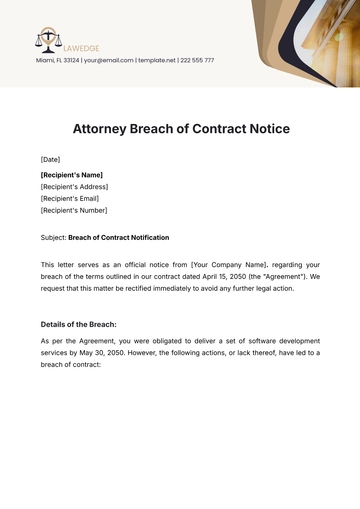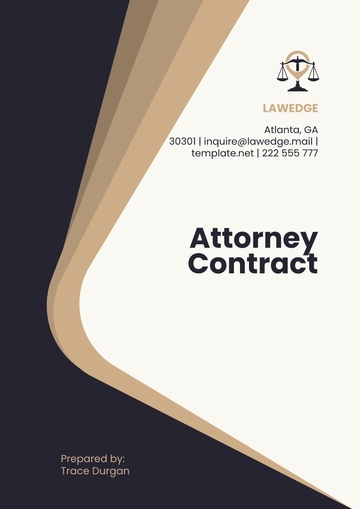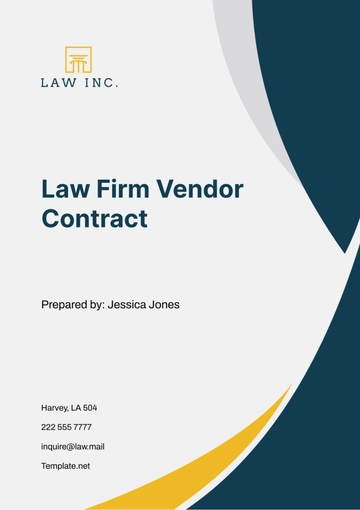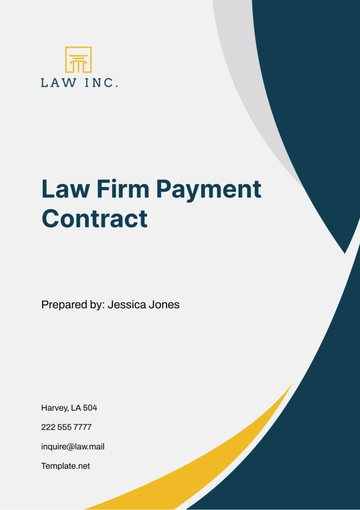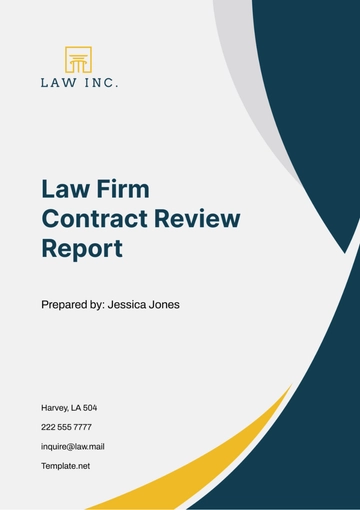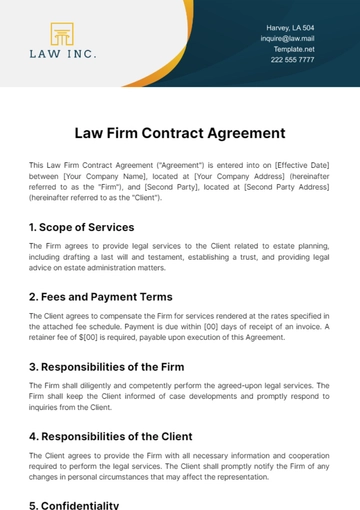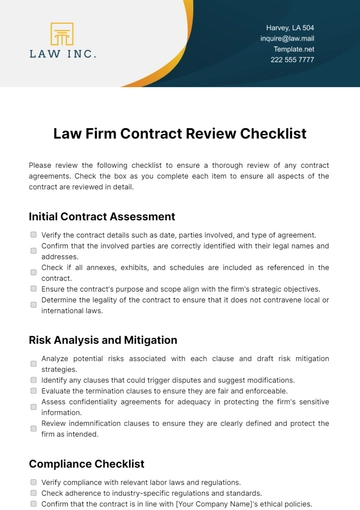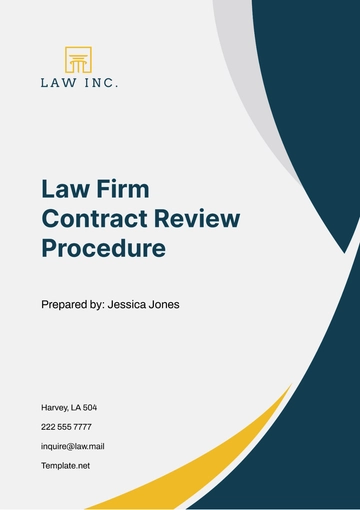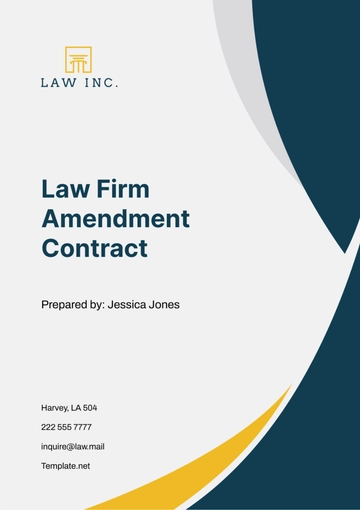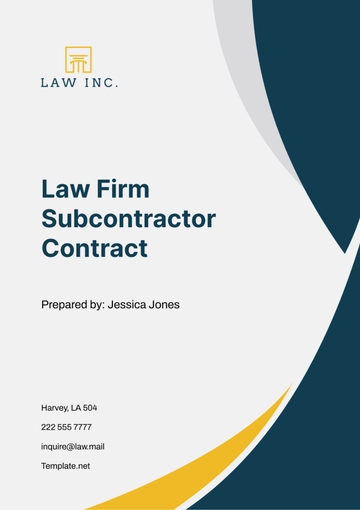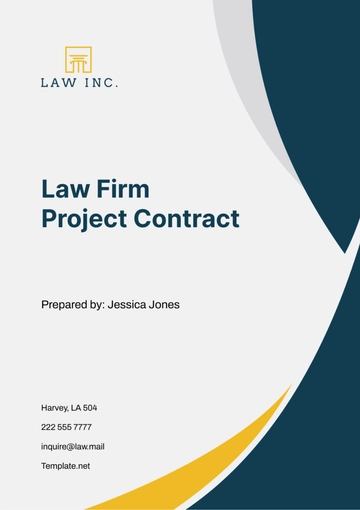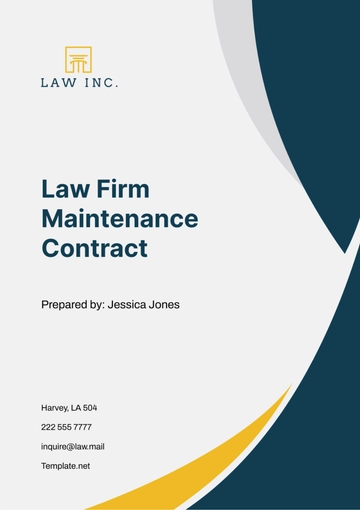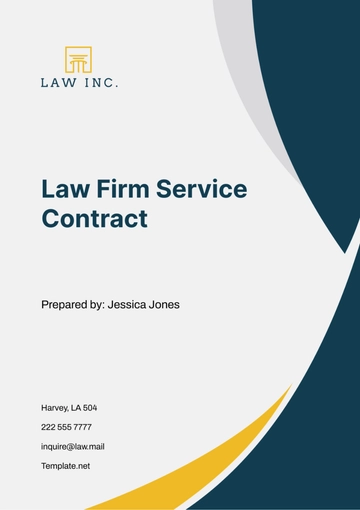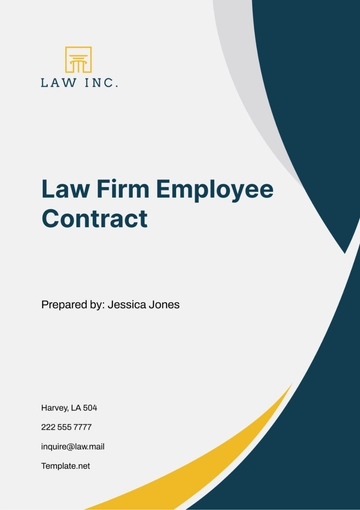Free Legal Contract Case Study Analysis
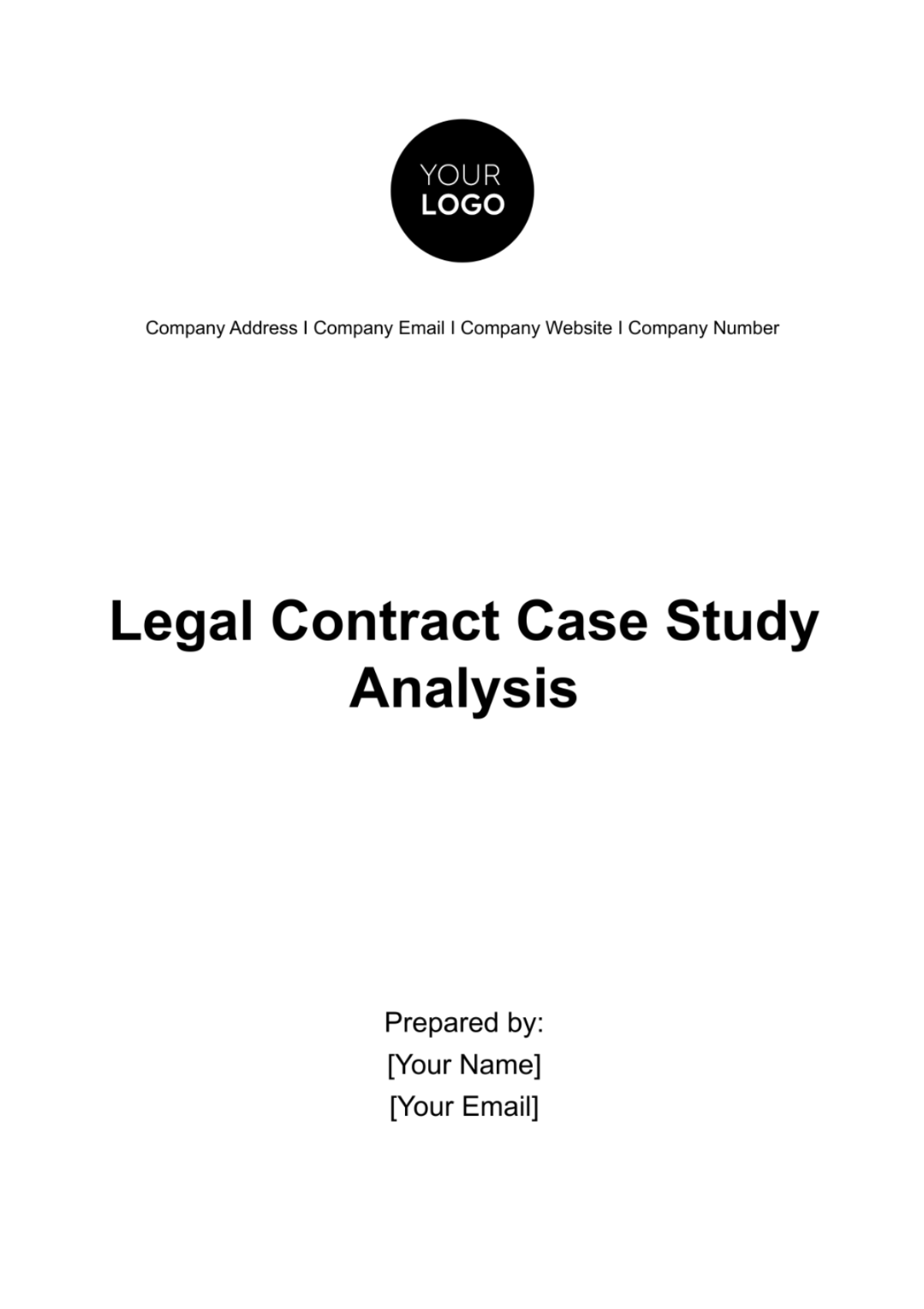
I. Introduction
The legal contract case study under analysis involves a dispute between [Your Company Name] and [Your Partner Company Name]. [Your Company Name], a prominent software development firm, entered into a service agreement with [Your Partner Company Name], a manufacturing company specializing in automotive components. The agreement aimed to facilitate the implementation of a customized inventory management system developed by [Your Company Name].
The contract was executed on January 15, 2050, following negotiations between representatives from both parties. It had an initial term of two years, with provisions for renewal upon mutual agreement. The contractual relationship aimed to streamline inventory tracking processes and optimize supply chain efficiency for [Your Partner Company Name].
The case study presents a scenario where [Your Company Name] alleges that [Your Partner Company Name] has failed to fulfill its obligations under the contract, leading to a breach of contract claim. The dispute arises from [Your Partner Company Name]'s alleged failure to provide timely access to necessary data and personnel required for the system implementation. The following analysis delves into the details of the dispute, examining the contractual terms, relevant legal principles, and potential avenues for resolution.
II. Background
The background of the legal contract case study encompasses the details surrounding the contractual relationship between [Your Company Name] and [Your Partner Company Name].
A. [Your Company Name]
[Your Company Name] is a Delaware-registered corporation with its headquarters located at [Your Company Address]. Established in 2050, [Your Company Name] specializes in providing cutting-edge IT solutions to clients across various industries. With a focus on innovation and customer satisfaction, [Your Company Name] has built a reputation for delivering high-quality software products and services. The company is led by [Your Name], CEO, who oversees strategic decision-making and business development initiatives.
B. [Your Partner Company Name]
[Your Partner Company Name] is a family-owned manufacturing company headquartered at [Your Partner Company Address]. Founded in 2052, [Your Partner Company Name] specializes in producing precision automotive components for major automotive manufacturers. Led by [Partner's Representative Name], President, the company has demonstrated a commitment to excellence and reliability in its operations. [Your Partner Company Name] operates with a core value of customer-centricity, aiming to meet and exceed client expectations.
The contractual relationship between [Your Company Name] and [Your Partner Company Name] was initiated to implement a customized inventory management system tailored to [Your Partner Company Name]'s specific needs. The table below outlines key information regarding the parties involved, contract terms, and relevant dates:
Party | [Your Company Name] | [Your Partner Company Name] |
|---|---|---|
Type of Entity | Corporation | Corporation |
Address | [Your Company Address] | [Your Partner Company Address] |
Contact Person | [Your Name], CEO | Partner's Representative Name], President |
[Your Company Email] | [Your Partner Company Email] | |
Phone Number | [Your Company Number] | [Your Partner Company Number] |
Contract Type | Service Agreement | |
Date of Execution | January 15, 2050 | |
Initial Term | 2 years | |
Renewal Option | Yes | |
Scope of Services | Implementation of Inventory Management System | |
Payment Terms | Net 30 |
The contract between the parties outlines the scope of services to be provided by [Your Company Name] to [Your Partner Company Name], the payment terms, and any other pertinent contractual obligations.
III. Issues Presented
The issues presented in the legal contract case study between [Your Company Name] and [Your Partner Company Name] include:
Issue | Description |
|---|---|
Alleged Breach of Contract | [Your Company Name] alleges that [Your Partner Company Name] has breached the contract by failing to provide timely access to necessary data and personnel. This alleged breach has resulted in significant delays in the implementation of the inventory management system and has hindered [Your Company Name]'s ability to optimize its supply chain operations as per the terms of the agreement. |
Failure to Fulfill Obligations | [Your Partner Company Name] is accused of failing to fulfill its obligations under the contract regarding the implementation of the inventory management system. Specifically, [Your Company Name] asserts that [Your Partner Company Name] has not provided the required support, resources, and cooperation necessary for the successful execution of the project. |
Disruption of Project Timeline | The alleged breach by [Your Partner Company Name] has led to a significant disruption of the project timeline outlined in the contract. This disruption has resulted in delays in the delivery of key project milestones, impacting [Your Company Name]'s ability to meet its operational objectives and deliverables within the agreed-upon timeframe. |
Potential Financial Loss | As a consequence of the breach and the resultant project delays, [Your Company Name] faces potential financial loss. These losses include additional project management costs, lost revenue opportunities, and reputational damage due to the inability to deliver on commitments made to clients and stakeholders. |
IV. Legal Analysis
The legal analysis of the case study involves an examination of relevant legal principles and their application to the contractual dispute between [Your Company Name] and [Your Partner Company Name].
A. Applicable Laws and Regulations
The case is governed by contract law principles as outlined in the Uniform Commercial Code (UCC) and relevant provisions of state contract law. Additionally, any specific clauses within the contract itself will guide the analysis.
B. Analysis of Relevant Case Law
Previous court decisions regarding breach of contract and performance issues in similar contractual disputes will be examined to provide insights into potential outcomes and legal precedents.
C. Evaluation of Contractual Provisions
The terms and conditions of the service agreement between [Your Company Name] and [Your Partner Company Name] will be scrutinized to determine the parties' rights, obligations, and potential remedies in the event of a breach. Key provisions related to project timelines, cooperation, and dispute resolution mechanisms will be analyzed in detail.
D. Assessment of Potential Liabilities and Remedies
An assessment of potential liabilities, including damages resulting from the alleged breach, will be conducted. Additionally, potential remedies available to [Your Company Name] under the contract and applicable law will be explored, such as specific performance, monetary damages, or contract termination. [Your Company Name]'s legal team will assess the extent of damages incurred, including direct losses and any consequential damages resulting from the breach.
E. Identification of Defenses and Mitigating Factors
Any defenses or mitigating factors that [Your Partner Company Name] may raise to refute the allegations of breach of contract will be considered. Factors such as force majeure, impossibility of performance, or substantial performance will be analyzed for their applicability to the case. [Your Company Name]'s legal team will evaluate the validity of these defenses and assess their potential impact on the case outcome.
F. Risk Management Strategies
Lastly, risk management strategies will be discussed to mitigate future contractual disputes and enhance the enforceability of contracts between [Your Company Name] and its business partners. These strategies may include enhanced due diligence, clear contract drafting, and proactive communication protocols. Additionally, [Your Company Name] will explore alternative dispute resolution mechanisms, such as mediation or arbitration, to expedite the resolution process and minimize legal costs.
V. Case Study Findings
Upon thorough analysis of the legal contract case study between [Your Company Name] and [Your Partner Company Name], the following findings have been established:
Finding | Description |
|---|---|
Breach of Contract | It has been determined that [Your Partner Company Name] has indeed breached the contract by failing to provide timely access to necessary data and personnel, as stipulated in the agreement. This breach has resulted in significant disruptions to the project timeline and has hindered [Your Company Name]'s ability to meet its contractual obligations. |
Damages Incurred | As a result of the breach, [Your Company Name] has incurred various damages, including additional project management costs, lost revenue opportunities, and reputational harm. These damages have had a significant financial impact on [Your Company Name] and have undermined its ability to deliver value to clients and stakeholders. |
Non-Performance of Obligations | [Your Partner Company Name] failed to fulfill its obligations under the contract regarding the implementation of the inventory management system. This non-performance has led to delays in project milestones and has compromised the effectiveness of the system, thereby impeding [Your Company Name]'s operational objectives. |
Material Adverse Effect on Operations | The breach and resultant project delays have had a material adverse effect on [Your Company Name]'s operations, causing disruption to supply chain processes and hindering the optimization of inventory management practices. This has led to inefficiencies and increased operational costs for [Your Company Name]. |
VI. Lessons Learned
The lessons learned section reflects on the key takeaways from the legal contract case study analysis between [Your Company Name] and [Your Partner Company Name], providing insights into areas for improvement and best practices moving forward.
A. Key Lessons:
Clear Communication Protocols: Establishing clear communication protocols between contracting parties is essential for ensuring alignment of expectations, addressing concerns promptly, and mitigating misunderstandings that may lead to disputes.
Comprehensive Due Diligence: Conducting comprehensive due diligence on potential partners, including evaluating past performance, financial stability, and adherence to contractual commitments, can help mitigate risks and ensure the selection of reliable and capable vendors.
Robust Contractual Provisions: Drafting robust contractual provisions that clearly define rights, obligations, and remedies for breach of contract is crucial for protecting the interests of both parties and facilitating effective dispute resolution in the event of disagreements.
Active Performance Monitoring: Implementing active performance monitoring mechanisms, such as setting up key performance indicators (KPIs) and conducting regular performance reviews, enables early detection of issues and facilitates timely intervention to address deviations from agreed-upon timelines and deliverables.
Prompt Dispute Resolution: Prioritizing prompt dispute resolution through mediation or alternative dispute resolution mechanisms can help prevent escalation of conflicts, minimize legal costs, and preserve business relationships by facilitating amicable settlement discussions.
VII. Recommendations
Based on the findings of the legal contract case study analysis, the following recommendations are proposed for resolution:
A. Future Recommendations
Pursue Legal Remedies
[Your Company Name] should consider pursuing legal remedies available under the contract and applicable law to recover damages incurred as a result of the breach. This may include seeking monetary compensation for direct losses and consequential damages suffered.
Engage in Mediation or Alternative Dispute Resolution
Given the complexities of the case and the desire to expedite resolution, [Your Company Name] should explore mediation or alternative dispute resolution mechanisms to facilitate amicable settlement discussions with [Your Partner Company Name]. This approach may help mitigate legal costs and time delays.
Review and Revise Contract Terms
[Your Company Name] should review and revise contract terms to incorporate clearer performance metrics, dispute resolution procedures, and remedies for breach of contract. Strengthening contractual provisions can help mitigate risks and enhance enforceability in future agreements.
Enhance Due Diligence in Vendor Selection
In future vendor selection processes, [Your Company Name] should conduct enhanced due diligence to assess the reliability and capability of potential partners. This includes evaluating past performance, financial stability, and adherence to contractual commitments.
Improve Communication and Collaboration
Enhancing communication and collaboration channels between [Your Company Name] and its partners is essential to prevent misunderstandings and facilitate smoother project implementation. Implementing regular progress meetings and status updates can foster transparency and alignment of goals.
Implement Performance Monitoring Mechanisms
[Your Company Name] should implement robust performance monitoring mechanisms to track the progress of projects and ensure compliance with contractual obligations. This includes setting up key performance indicators (KPIs) and conducting regular performance reviews to address any deviations promptly.
VIII. Conclusion
The legal contract case study analysis between [Your Company Name] and [Your Partner Company Name] reveals significant breaches of contractual obligations by [Your Partner Company Name], leading to disruptions in project timelines and operational inefficiencies for [Your Company Name]. The findings highlight the importance of clear contractual terms, effective communication, and diligent performance monitoring in mitigating risks and resolving disputes in business relationships.
Moving forward, [Your Company Name] should take proactive measures to enforce its contractual rights, pursue appropriate legal remedies, and strengthen its risk management practices to prevent similar issues in the future. By implementing the recommended strategies and lessons learned from this case study, [Your Company Name] can enhance its ability to deliver value to clients, mitigate financial risks, and foster productive partnerships with vendors and stakeholders.
- 100% Customizable, free editor
- Access 1 Million+ Templates, photo’s & graphics
- Download or share as a template
- Click and replace photos, graphics, text, backgrounds
- Resize, crop, AI write & more
- Access advanced editor
Explore legal intricacies with the Legal Contract Case Study Analysis Template from Template.net. This comprehensive tool facilitates in-depth examination and assessment of legal contracts. Editable and customizable, it adapts to your specific case study needs. Utilize our Ai Editor Tool to modify content effortlessly. Enhance legal analysis, streamline processes, and achieve optimal outcomes in contract evaluations.
You may also like
- Rental Contract
- Contractor Contract
- Contract Agreement
- One Page Contract
- School Contract
- Social Media Contract
- Service Contract
- Business Contract
- Restaurant Contract
- Marketing Contract
- Real Estate Contract
- IT Contract
- Cleaning Contract
- Property Contract
- Supplier Contract
- Partnership Contract
- Food Business Contract
- Construction Contract
- Employment Contract
- Investment Contract
- Project Contract
- Payment Contract
- Student Contract
- Travel Agency Contract
- Startup Contract
- Annual Maintenance Contract
- Employee Contract
- Gym Contract
- Event Planning Contract
- Personal Contract
- Nursing Home Contract
- Law Firm Contract
- Work from Home Contract
- Software Development Contract
- Maintenance Contract
- Music Contract
- Amendment Contract
- Band Contract
- DJ Contract
- University Contract
- Salon Contract
- Renovation Contract
- Photography Contract
- Lawn Care Contract
